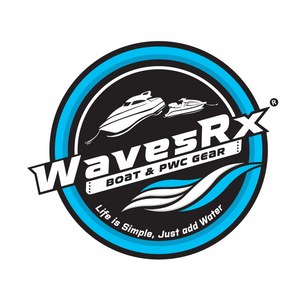What to Do When PWC Fishing Gear Gets Waterlogged
If you're out fishing on your PWC and your gear gets soaked, you're not alone. Fishing gear getting waterlogged happens all the time. Waves crash, unexpected rain hits, or maybe that cooler didn’t seal quite right. The problem isn’t just getting things wet. It’s what happens after. Water can ruin tackle boxes, weaken lines, and cause wear on tools. If your gear isn’t working the way it should, it can throw off your whole trip.
Proper care for your gear means more time fishing and less time fixing or replacing stuff. A lot of anglers bring along more gear than they realize, and once some of it starts getting waterlogged, it doesn't take long for problems to build up. Knowing what to look for and how to act fast makes a big difference.
Signs Of Waterlogged PWC Fishing Gear
Figuring out if your fishing gear has gotten waterlogged isn’t always obvious at first. Sometimes things still look functional, but the damage is already starting. There are a few telltale signs that make it pretty clear something isn’t right.
Common signs include:
- Items that feel heavier than usual, especially soft tackle bags or backpacks
- Water pooling inside tackle containers or leaking from compartments
- Rust forming on tools, hooks, or snaps
- Lines that look cloudy, feel limp, or break more easily than usual
- Moldy smells or visible moisture in places that should stay dry
Fishing nets tend to hold moisture without showing it right away, especially if bunched up in a storage compartment. So do gloves, seat compartments, and fabric straps. Even rods and reels can be affected. If you pick up a reel and it feels stiff or gritty when you spin it, chances are moisture worked its way inside.
Performance starts to suffer fast. Hooks lose points, line tension gets weird, and lures don’t move the way they should. One problem starts to feed into the next, and before long you’re replacing things that could’ve lasted much longer with a quick clean or dry-out.
Keep an eye and nose out whenever you're unloading your PWC after a few hours out. If you spot any signs, it’s best to take action sooner rather than later.
Immediate Steps To Take When Your Gear Gets Waterlogged
If you notice your gear has gotten soaked, don’t wait. Acting fast can help prevent permanent damage and might even save a few items.
Here’s what to do:
1. Pull all affected gear out of your PWC and lay it out where it can get air. If you're still on the water, use the upper deck or even an open seat to get things drying early.
2. Open sealed containers like tackle boxes or dry bags. Dump out pooling water and remove any wet bait, sponges, or cloth wraps.
3. Separate anything metal from wet fabric. This helps stop rust or corrosion.
4. Use a clean rag or towel to blot surface water off rods, grips, and containers.
5. Lay soft gear flat like gloves, pouches, hats, or net bags so they don’t stay bunched up and trap water.
6. If running water is nearby, rinse off saltwater with fresh water. Then dry thoroughly.
7. Keep gear off the ground if it’s muddy or damp. Use your PWC seat, a crate, or even your trailer as a clean drying space.
If you're back home, putting wet gear in a sunny garage or under a fan helps speed up the drying. Avoid using anything hot like a blow dryer unless you know for sure the material can take it.
Don’t forget about the little things. Pliers and clamps can hold crucial places in your setup and a small tool hiding in a soaked pocket can take down the rest of your gear if you toss it in a dry box still dripping.
Best Practices For Preventing Waterlogging
Once you've dealt with waterlogged gear, the next move is figuring out how to stop it from happening again. Prevention is way easier than re-drying your setup every few trips. Simple changes go a long way.
Start with storage. Gear that's tossed into open compartments or soft bags will soak up moisture quickly. Even items that feel water-resistant might not be sealed well enough to hold up on a longer ride or after splashes. What helps most is thinking ahead and setting your gear up the right way from the start.
Here are some prevention tips to keep your fishing gear dry on future outings:
- Use sealed containers with latches that actually close tight. Tackle systems with internal waterproof trays provide even better protection.
- Keep a few large resealable plastic bags in your gear pack. Use them for soft items like gloves, towels, or spare shirts that always seem to end up wet.
- If your PWC has dry storage, double-check the seal and gasket. Water often gets in if the gasket is old or cracked.
- Prop your rods up when your PWC is docked or in rough water. This keeps the reel and grip off the floor, avoiding puddles or spray damage.
- Use lanyards, clips, or bungees to hang gear inside compartments instead of stacking it down low. This helps air circulation and prevents water from collecting at the bottom.
- Consider add-ons or PWC accessories for fishing like waterproof bags, deck mats, and elevated compartments that are built to stand up to wet conditions.
- Watch how you launch and load. Fast water can rush into lower compartments during those moments especially.
A quick example from a regular weekend angler: He found his gear was always a little damp no matter what he did. The issue turned out to be his tackle bag sitting on top of a built-in cooler lid that constantly dripped with condensation. Once he added a raised tray and moved the gear bag to a drier spot, that extra moisture wasn’t a problem anymore.
Small changes like that can make a big difference and don’t take much time or effort.
When It's Time To Replace Your Fishing Gear
Sometimes, no matter how fast you act or how well you try to save something, the damage is already done. Fishing gear takes a beating, and when it stays wet too long, problems can stack up fast. Metals rust. Fabric weakens. Zippers jam. Even once-clean items can grow mold or smell stubbornly musty, no matter how often you dry them out.
If you've cleaned and dried your gear a few times but it's still not working the way it used to, you might be better off upgrading.
Signs you may need to replace your gear include:
- Rods feel loose or warped, especially near the grips
- Tackle boxes no longer seal properly or start cracking at the hinges
- Reels feel stiff or don't spin smoothly, even after oiling
- Moldy or sour smell lingers in bags or storage pockets
- Electrical items like lights or fish finders respond slower than usual
When it’s time to shop for replacements, focus on pieces meant to hold up against water over time. Look for marine-grade plastics, corrosion-resistant alloys, and fabrics with water-repelling coatings. These kinds of materials are designed for outdoor conditions and tend to stand up better during tough fishing days on your PWC.
Also think about your gear layout. If multiple pieces end up waterlogged often, look at where you’re storing them. Raising areas off the deck or swapping in smarter storage solutions can protect your new gear from the same patterns of damage.
Keeping Fishing Days Hassle-Free
PWC fishing is supposed to be relaxing, not a battle with soaked tools and damaged bags. When your gear is dry and ready, your trips go smoother and feel more enjoyable. You waste less time digging through soggy compartments and more time casting where the fishing’s good.
Staying on top of moisture control doesn’t need to be complicated. Keeping your storage smart, drying gear quickly after use, and knowing when to swap out items goes a long way. Gear that’s looked after works the way it should, and that’s where the fun really begins. Whether it’s a weekend outing or just a few stolen hours on a calm afternoon, the less you worry about your equipment, the better every trip feels.
Whether you're heading out for an early morning cast or gearing up for weekend water time, having the right PWC accessories for fishing can make all the difference. WavesRx offers gear built to handle the splash, salt, and sun so every trip stays hassle-free from launch to load-in.


